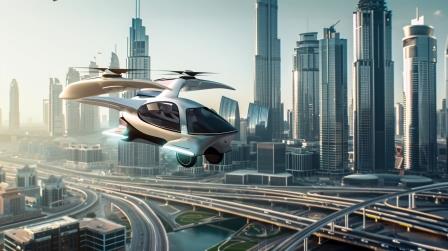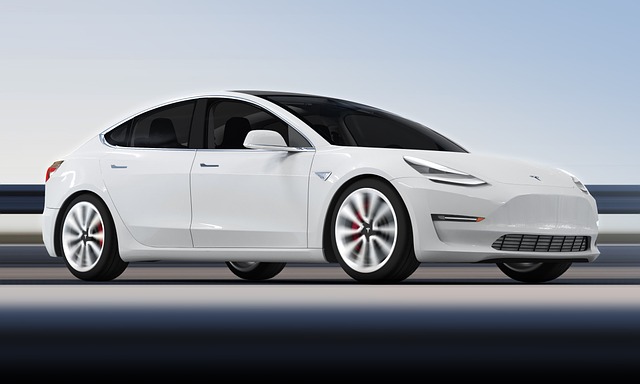The Future of Transportation in the UAE: Hyperloop, Flying Taxis, and Other Futuristic Projects

Introduction
The United Arab Emirates (UAE) is renowned for its ambition and innovation, consistently pushing the boundaries of what is possible. As the nation looks to the future, it is embracing cutting-edge transportation technologies that promise to revolutionize mobility. From the development of the Hyperloop to the introduction of flying taxis and other futuristic projects, the UAE is positioning itself as a global leader in advanced transportation solutions. This blog post delves into the exciting future of transportation in the UAE, exploring the key projects that are set to redefine how people and goods move across the region.
Hyperloop: A Leap into the Future

What is Hyperloop?
Hyperloop is a proposed high-speed transportation system that involves passenger pods traveling through low-pressure tubes at speeds exceeding 1,000 kilometers per hour. The concept, first popularized by Elon Musk, promises to drastically reduce travel times between major cities.
Hyperloop in the UAE
The UAE is at the forefront of Hyperloop development, with ambitious plans to connect key cities such as Dubai and Abu Dhabi. In collaboration with Virgin Hyperloop, the country aims to create a seamless and rapid transit network that could slash travel time between these cities to just 12 minutes. The UAE’s commitment to Hyperloop technology is evident in its ongoing feasibility studies, land allocations, and partnerships with leading technology firms.
Potential Benefits
- Speed and Efficiency: Hyperloop could significantly reduce travel times, making it possible to commute between cities in minutes.
- Sustainability: The system is designed to be energy-efficient, potentially using renewable energy sources and reducing carbon footprints.
- Economic Growth: Faster travel can enhance business connectivity, boost tourism, and open new economic opportunities.
Flying Taxis: The Sky’s the Limit

What are Flying Taxis?
Flying taxis are autonomous aerial vehicles designed for urban air mobility. These vehicles are envisioned to operate as on-demand, point-to-point transportation services, bypassing ground traffic congestion.
Flying Taxis in the UAE
Dubai has already made significant strides in the realm of flying taxis. In collaboration with companies like Volocopter, the city conducted successful test flights and is working towards creating a regulatory framework for the commercial operation of these vehicles. The goal is to integrate flying taxis into Dubai’s transportation network, offering a futuristic alternative for urban commuting.
Potential Benefits
- Reduced Traffic Congestion: Flying taxis can alleviate road congestion by providing an alternative aerial route.
- Time Savings: These vehicles can drastically cut down travel times within the city, making commutes quicker and more efficient.
- Innovative Image: By adopting flying taxis, the UAE continues to build its reputation as a hub of innovation and advanced technology.
Autonomous Vehicles: Redefining Road Travel

What are Autonomous Vehicles?
Autonomous vehicles (AVs) are self-driving cars equipped with advanced sensors, AI, and machine learning algorithms to navigate without human intervention.
Autonomous Vehicles in the UAE
The UAE has set ambitious targets for the integration of autonomous vehicles into its transport system. Dubai, for instance, aims for 25% of all journeys to be autonomous by 2030. The Roads and Transport Authority (RTA) is actively conducting trials and implementing policies to facilitate the adoption of AVs, including partnerships with global tech firms and local initiatives to develop smart infrastructure.
Potential Benefits
- Safety: AVs have the potential to reduce accidents caused by human error.
- Efficiency: Optimized driving patterns can lead to better fuel efficiency and reduced emissions.
- Accessibility: Autonomous vehicles can provide mobility solutions for individuals who are unable to drive.
Smart Infrastructure: The Backbone of Future Mobility

What is Smart Infrastructure?
Smart infrastructure encompasses advanced technologies integrated into urban planning to support efficient and sustainable transportation systems. This includes IoT devices, smart traffic management, and integrated public transport systems.
Smart Infrastructure in the UAE
The UAE is heavily investing in smart infrastructure to support its futuristic transportation goals. Initiatives such as the Dubai Smart City project aim to create a connected urban environment where data-driven insights enhance mobility, safety, and sustainability. Examples include smart traffic lights, real-time traffic monitoring, and the development of integrated transport hubs.
Potential Benefits
- Optimized Traffic Flow: Smart traffic management can reduce congestion and improve travel times.
- Environmental Sustainability: Efficient infrastructure supports reduced emissions and energy consumption.
- Enhanced User Experience: Seamless connectivity and real-time information improve the overall travel experience.
Conclusion
The future of transportation in the UAE is poised to be dynamic and transformative. With pioneering projects like the Hyperloop, flying taxis, autonomous vehicles, and smart infrastructure, the nation is setting new benchmarks in mobility. These innovations promise not only to enhance the efficiency and sustainability of transport but also to redefine the way people live, work, and travel. As the UAE continues to invest in and embrace these cutting-edge technologies, it is charting a course towards a more connected and futuristic world, solidifying its position as a leader in global transportation innovation.










